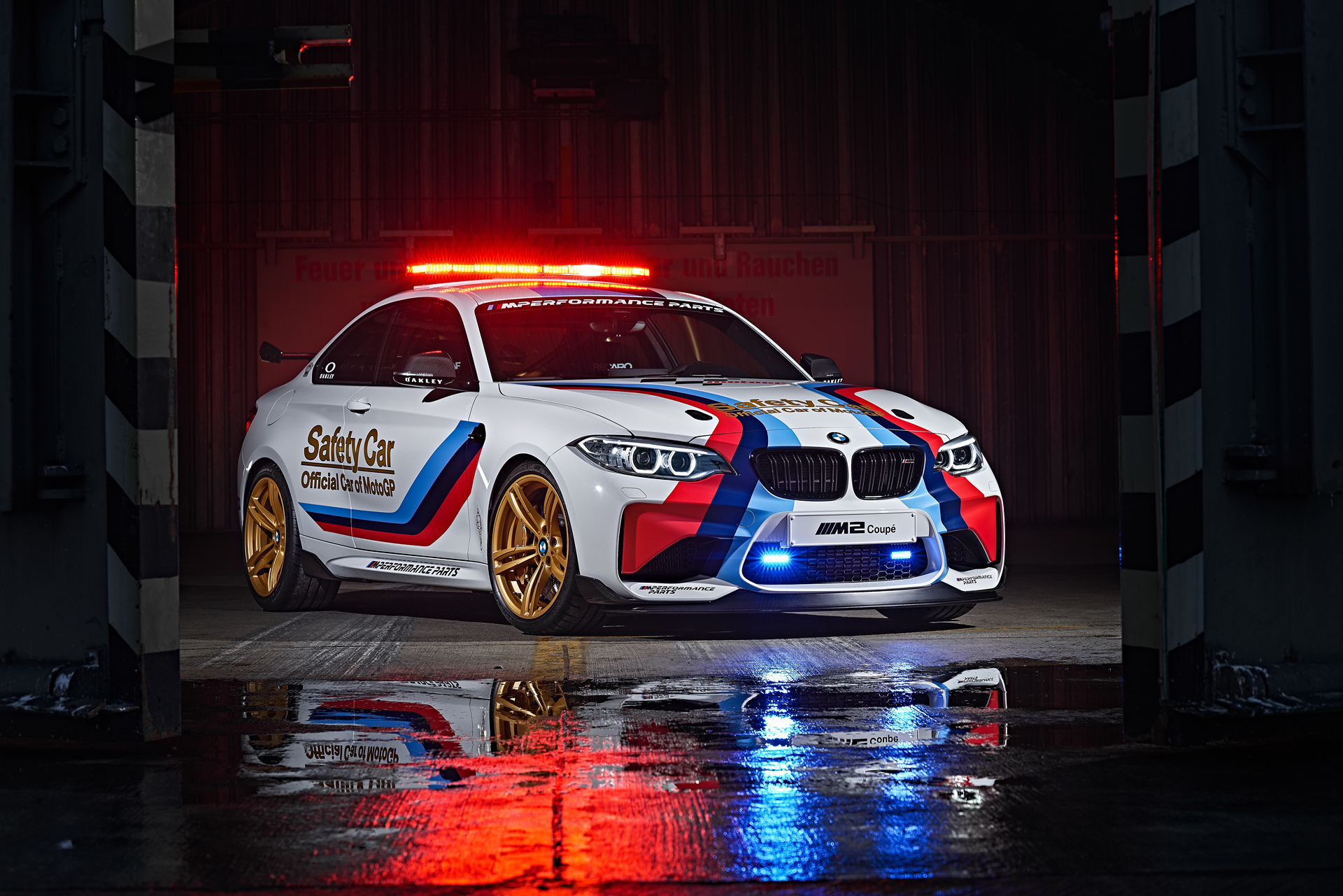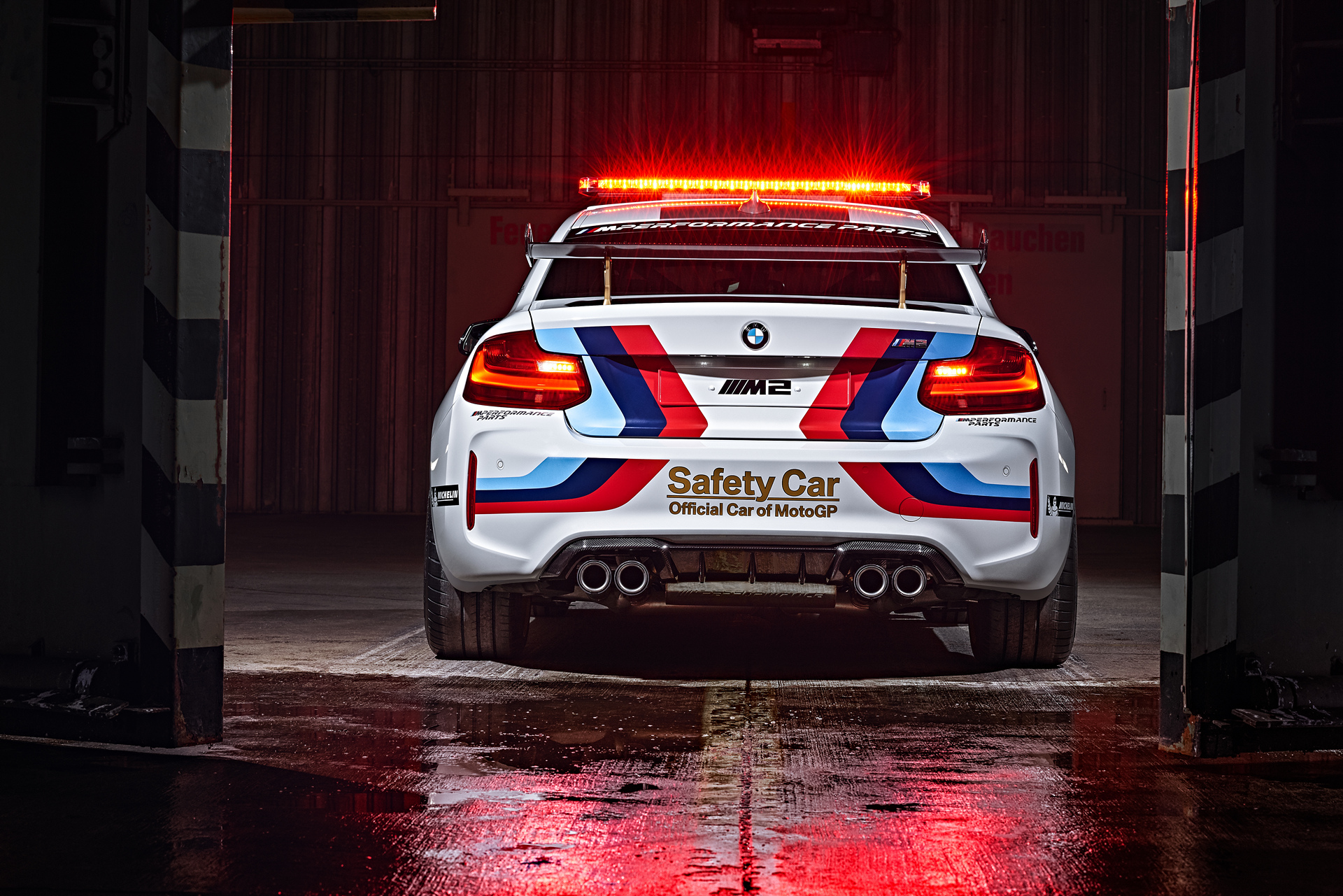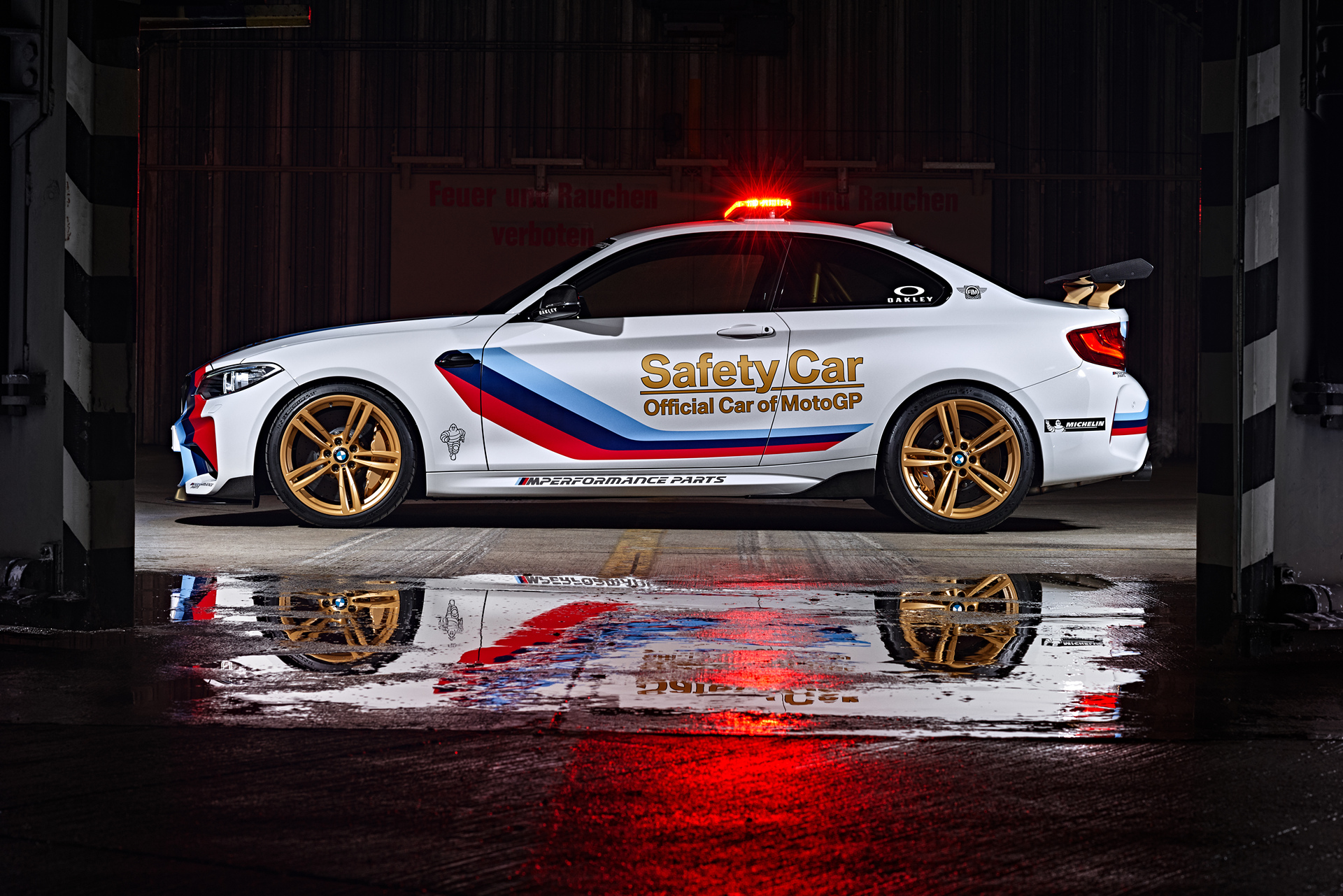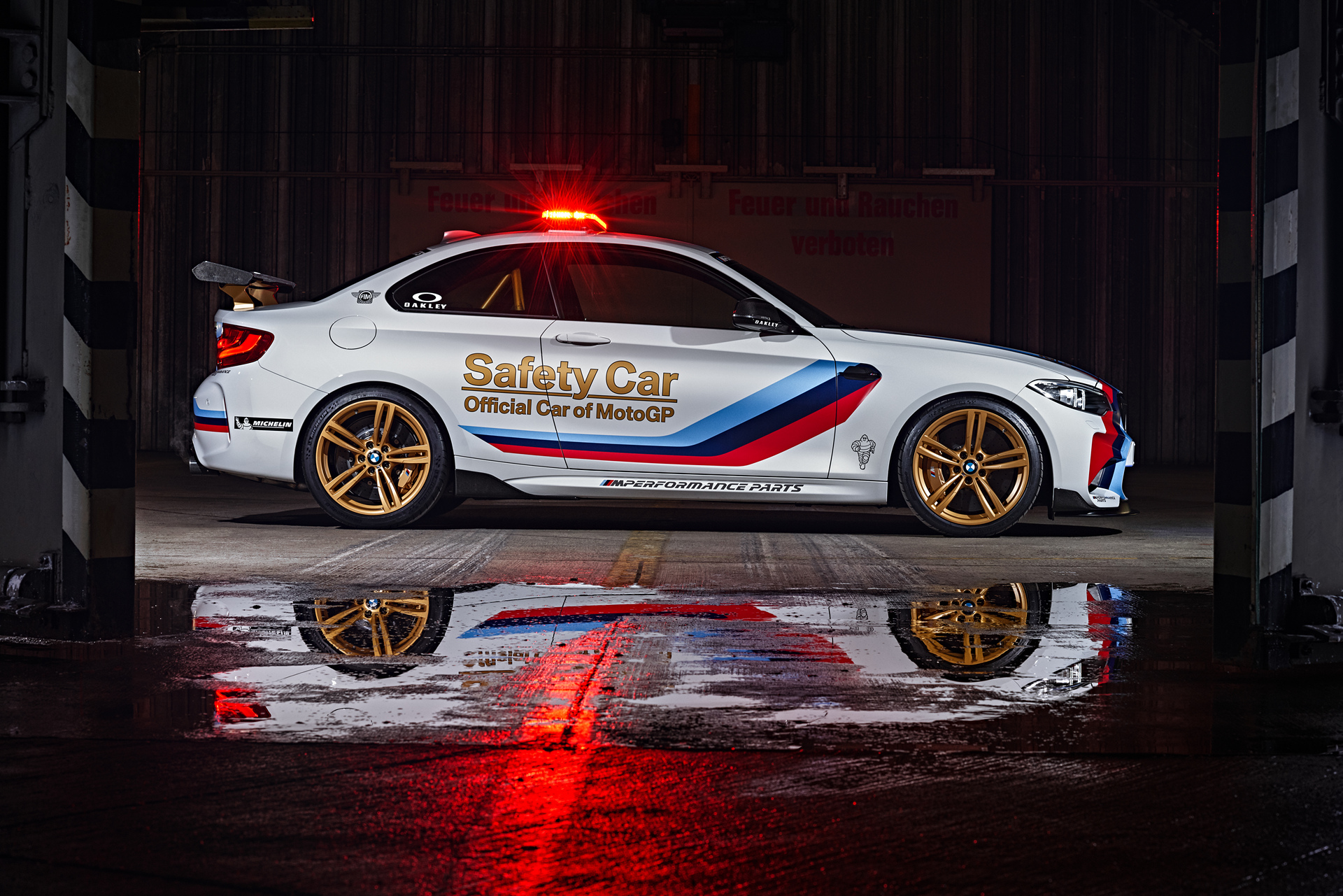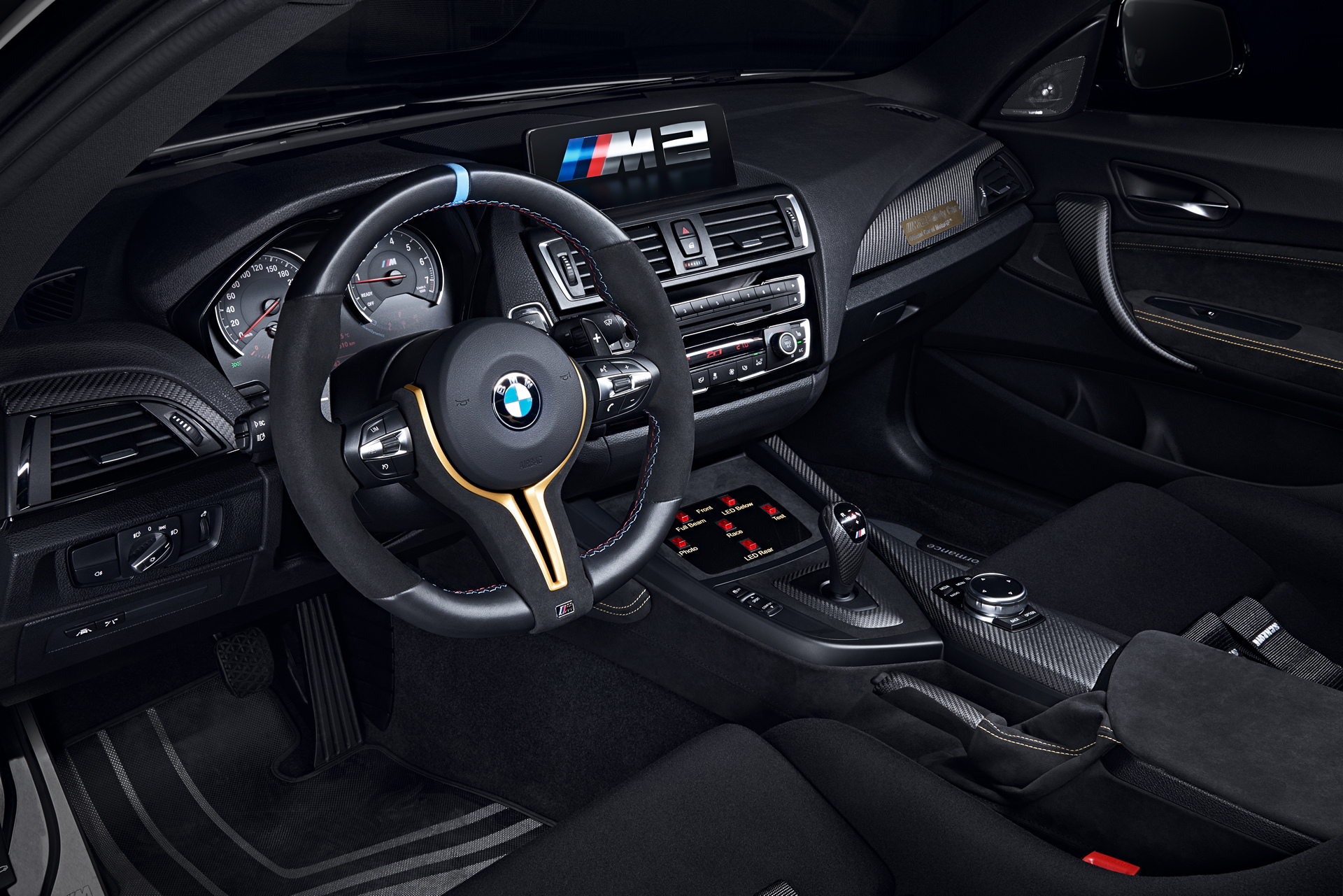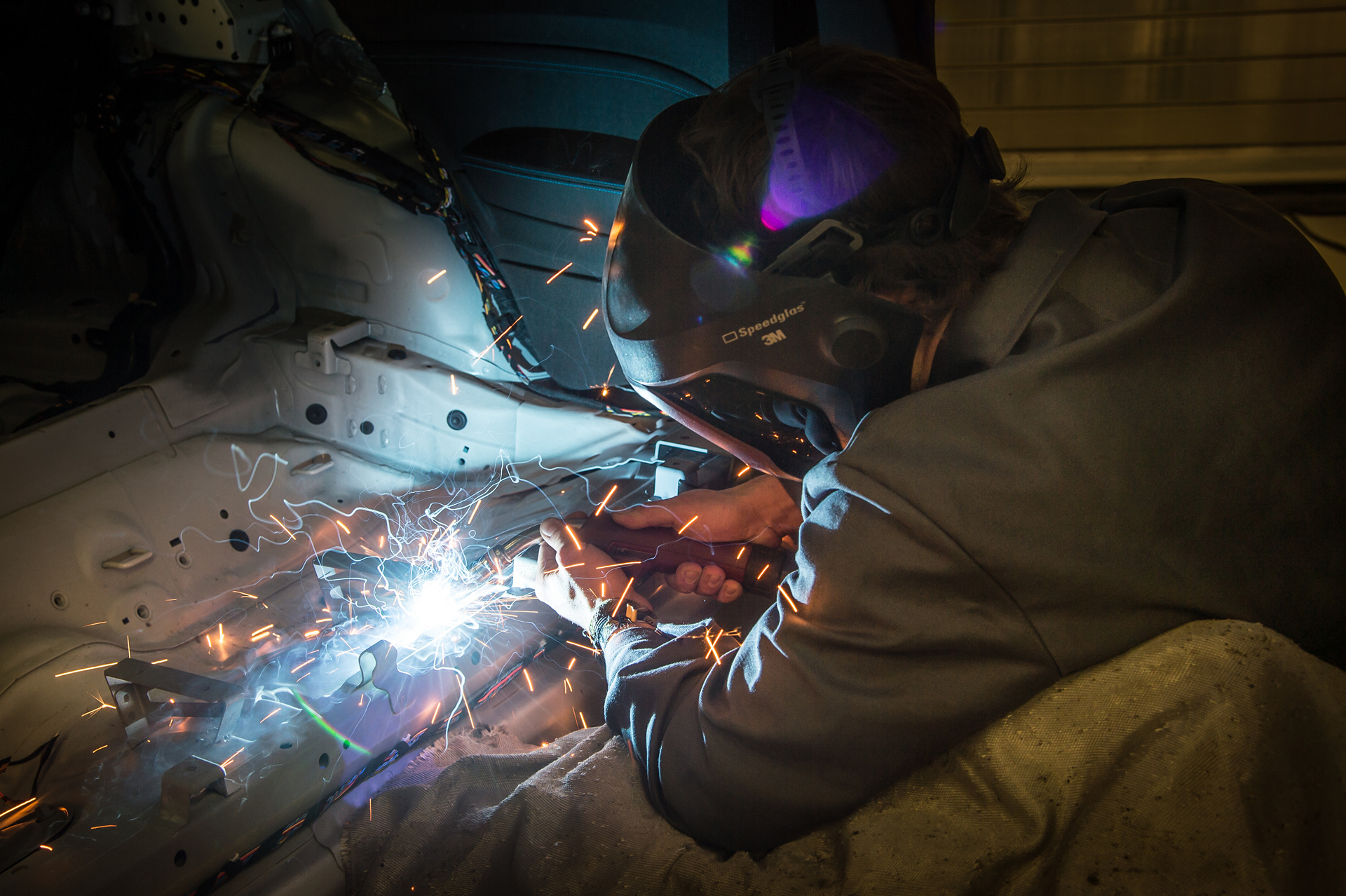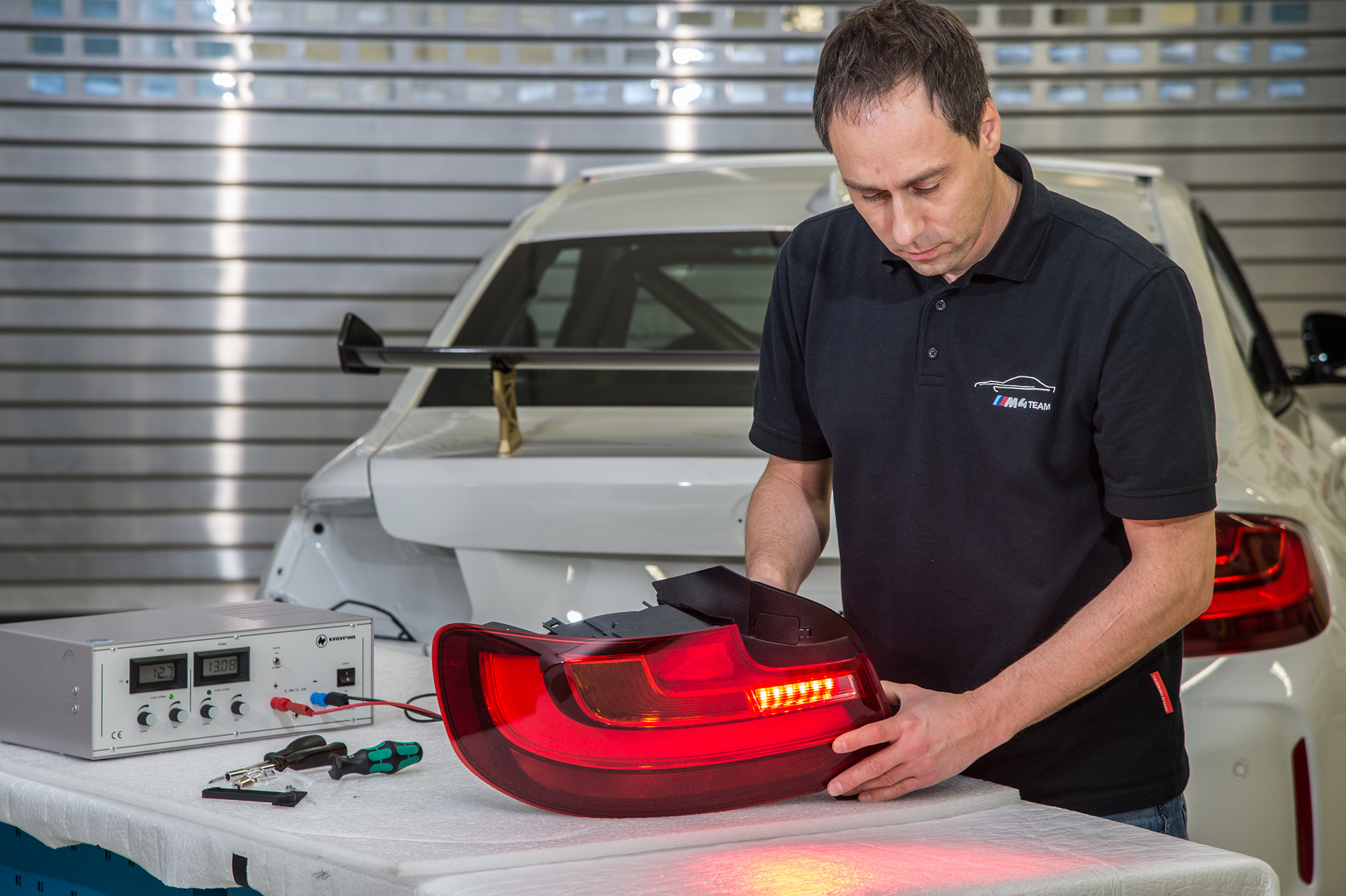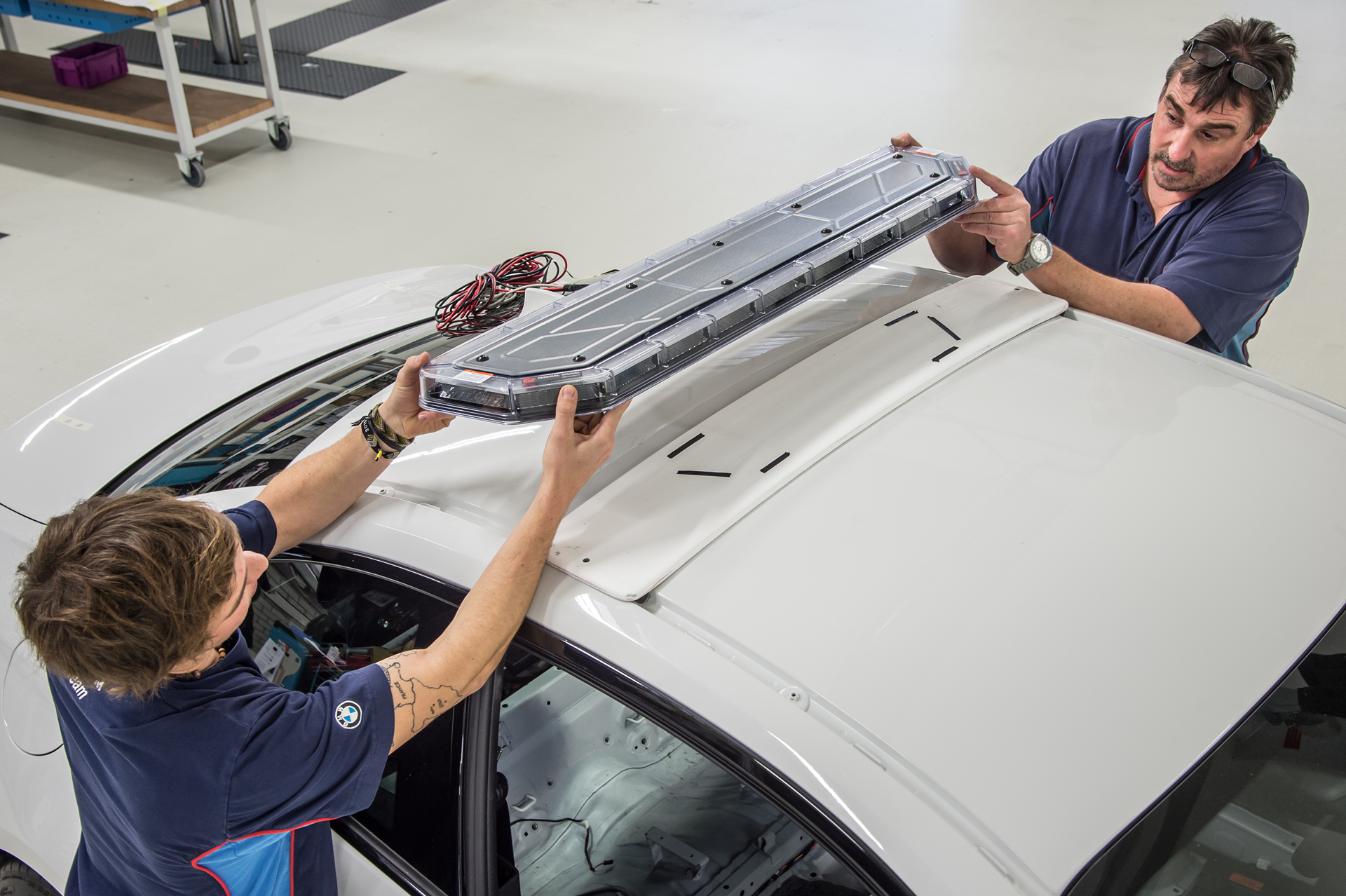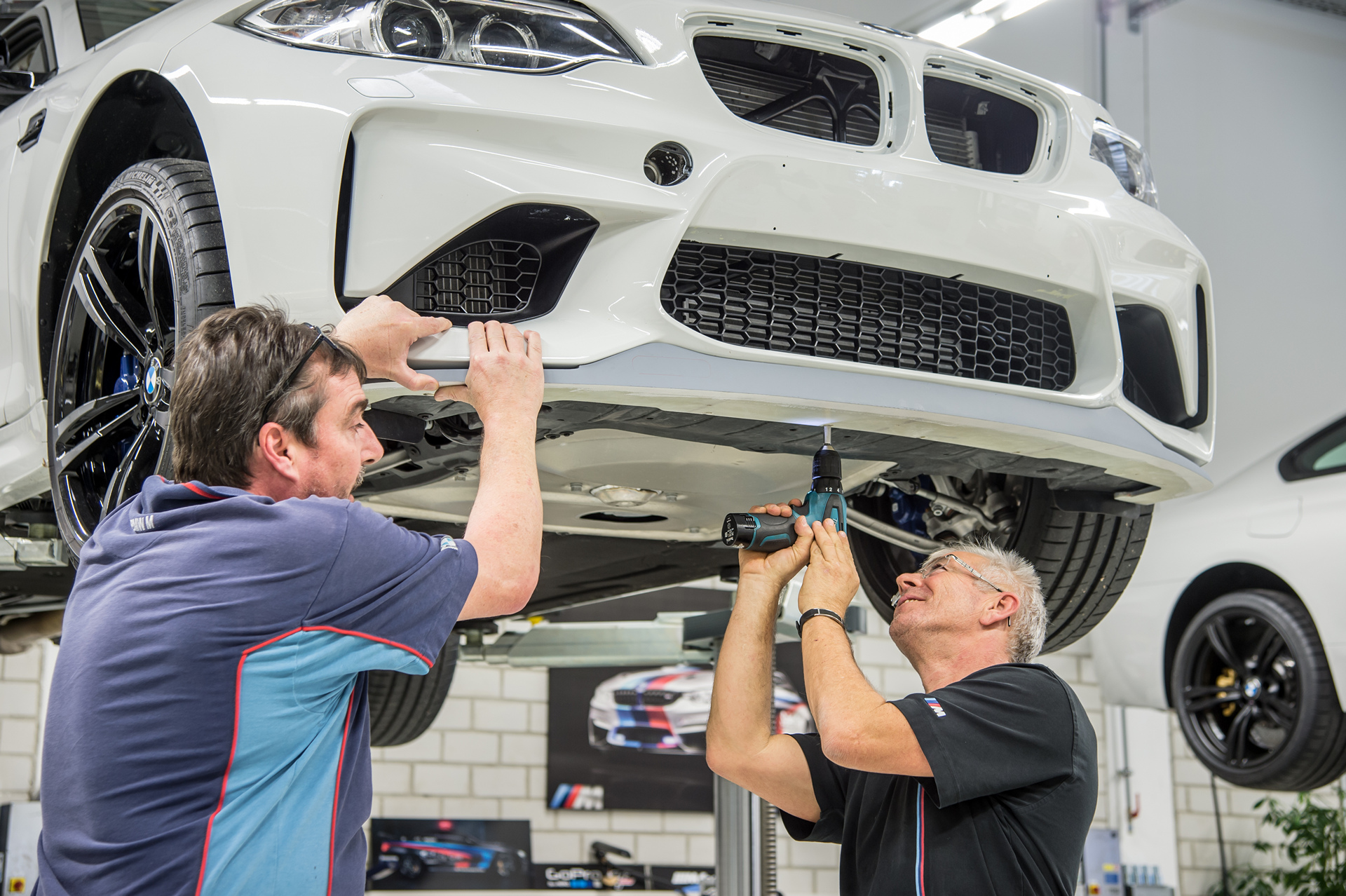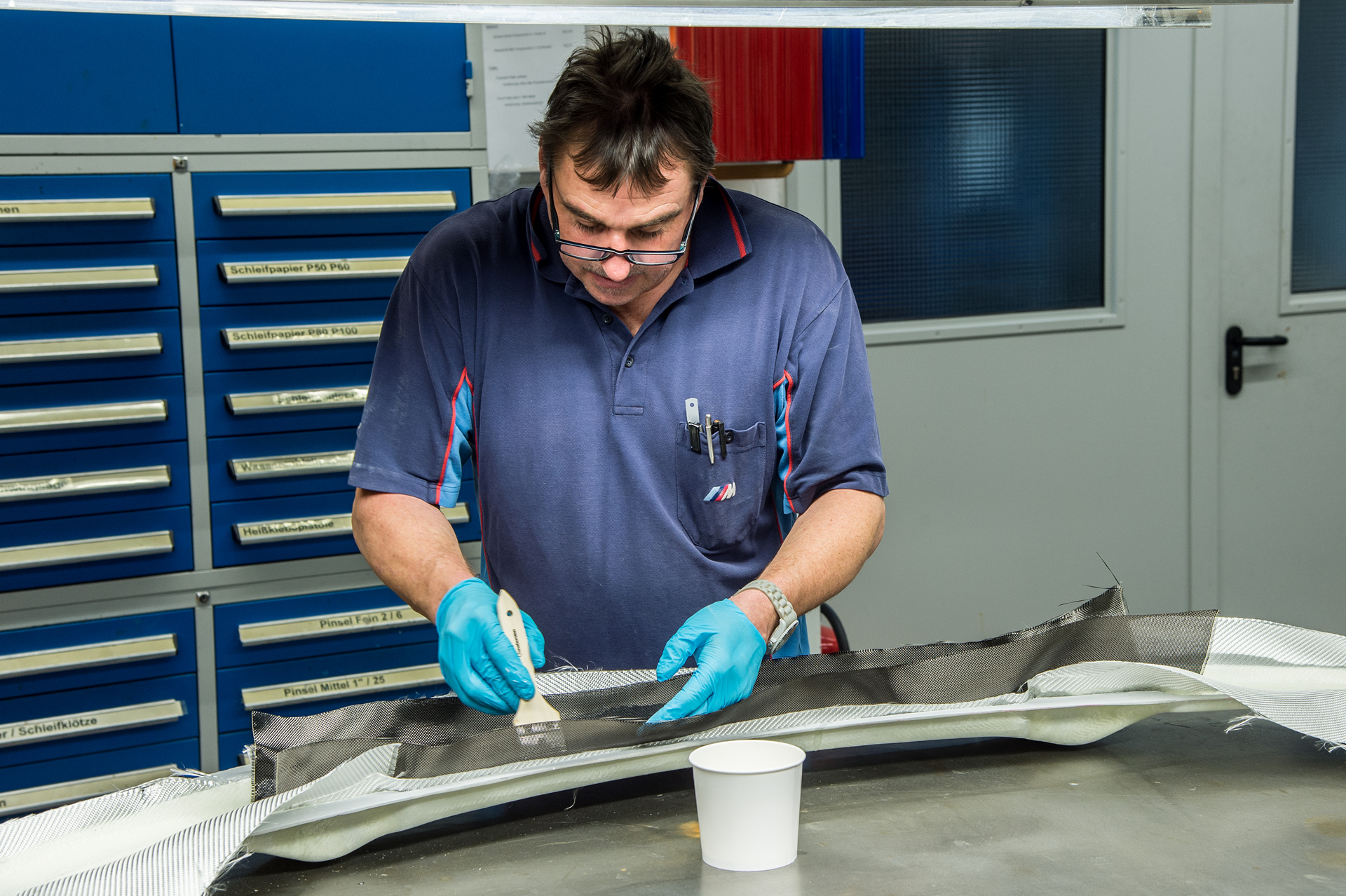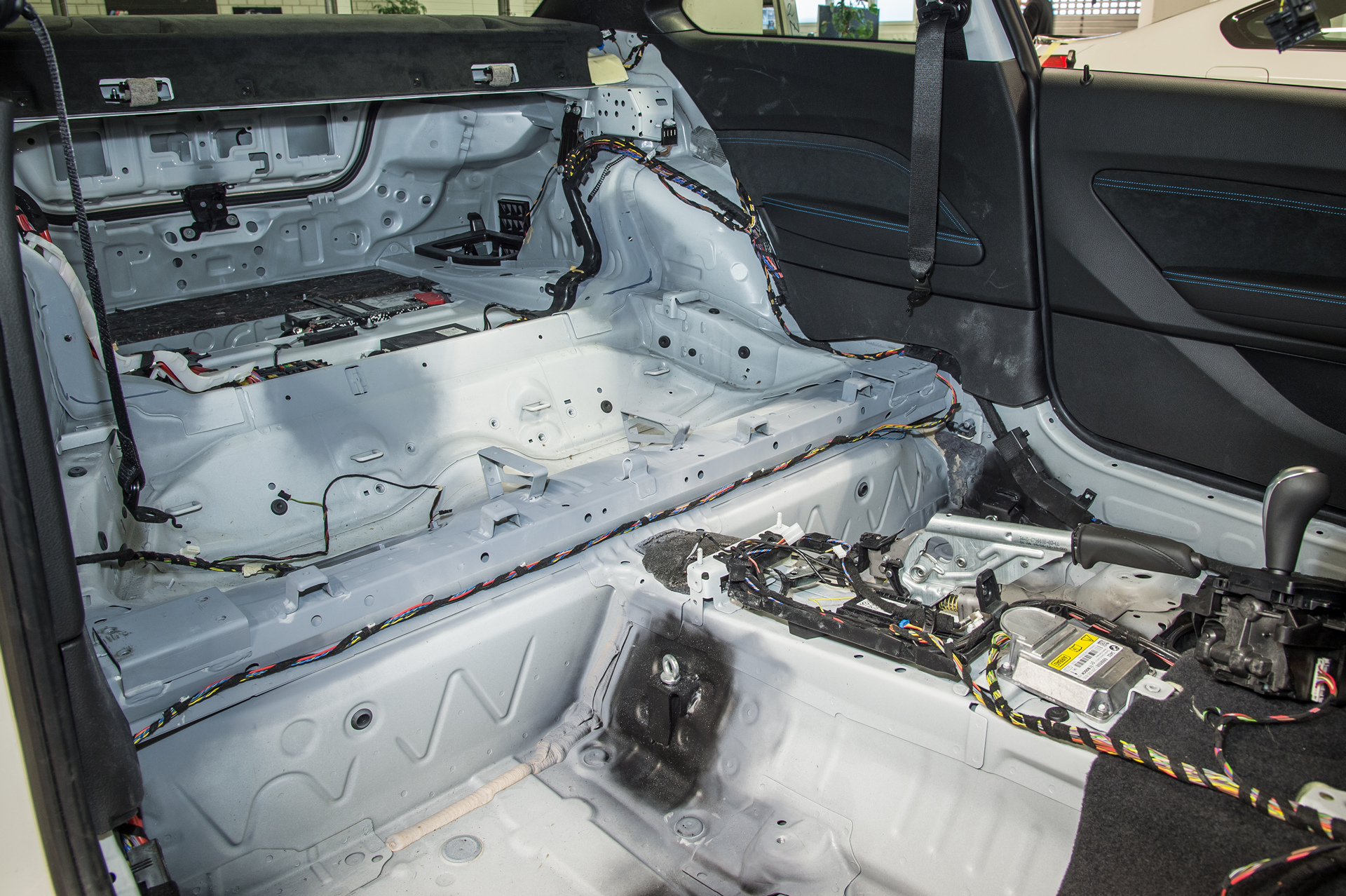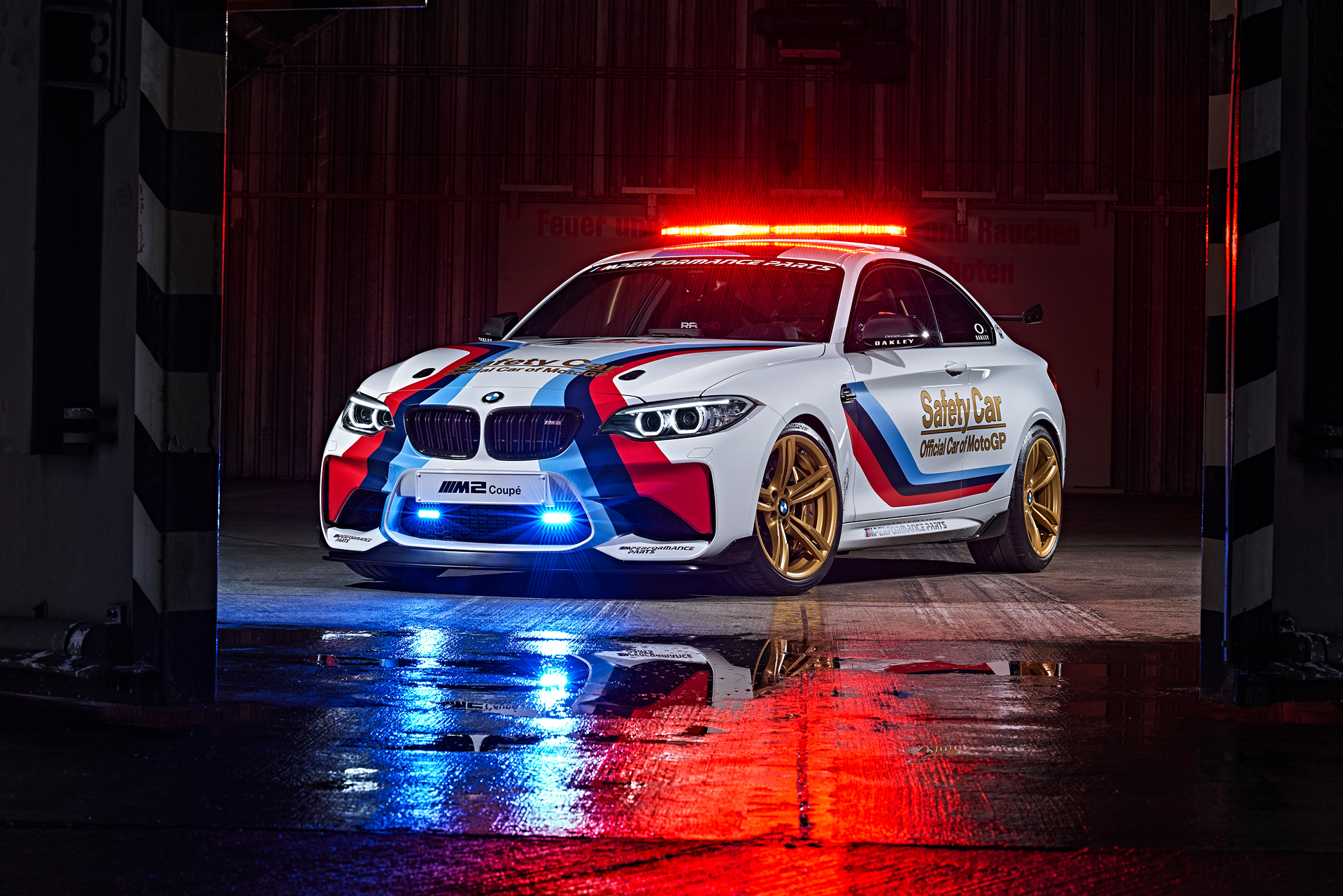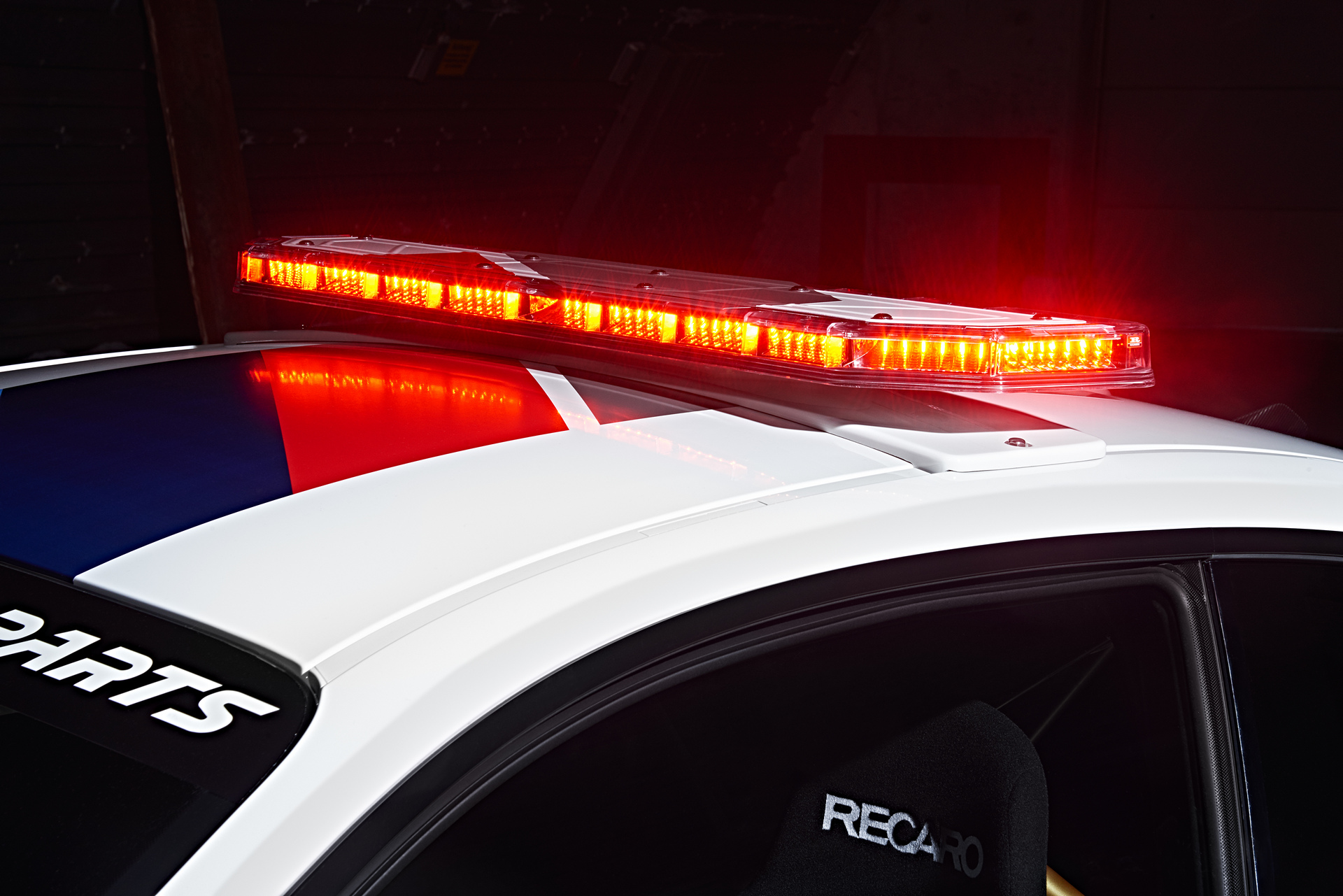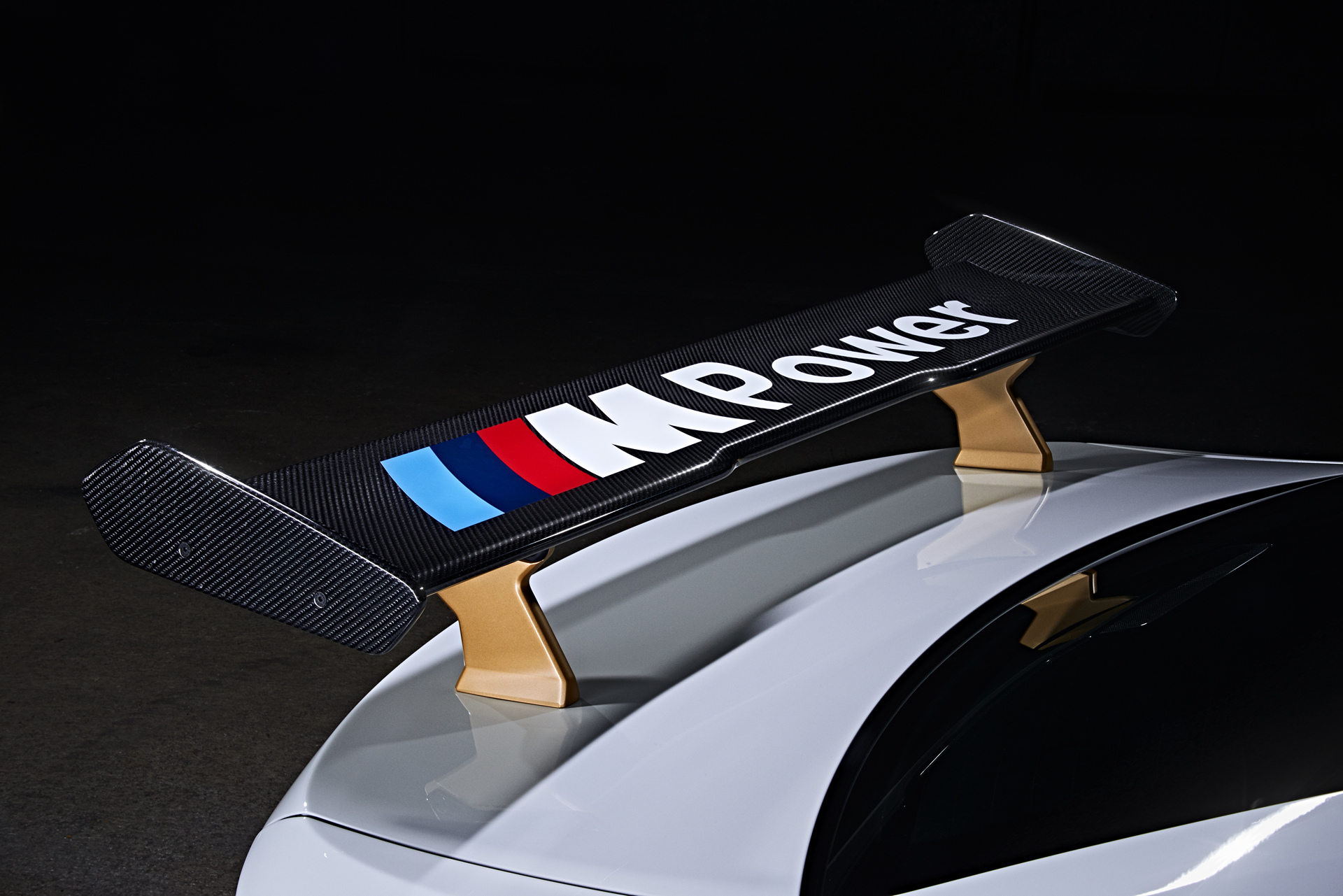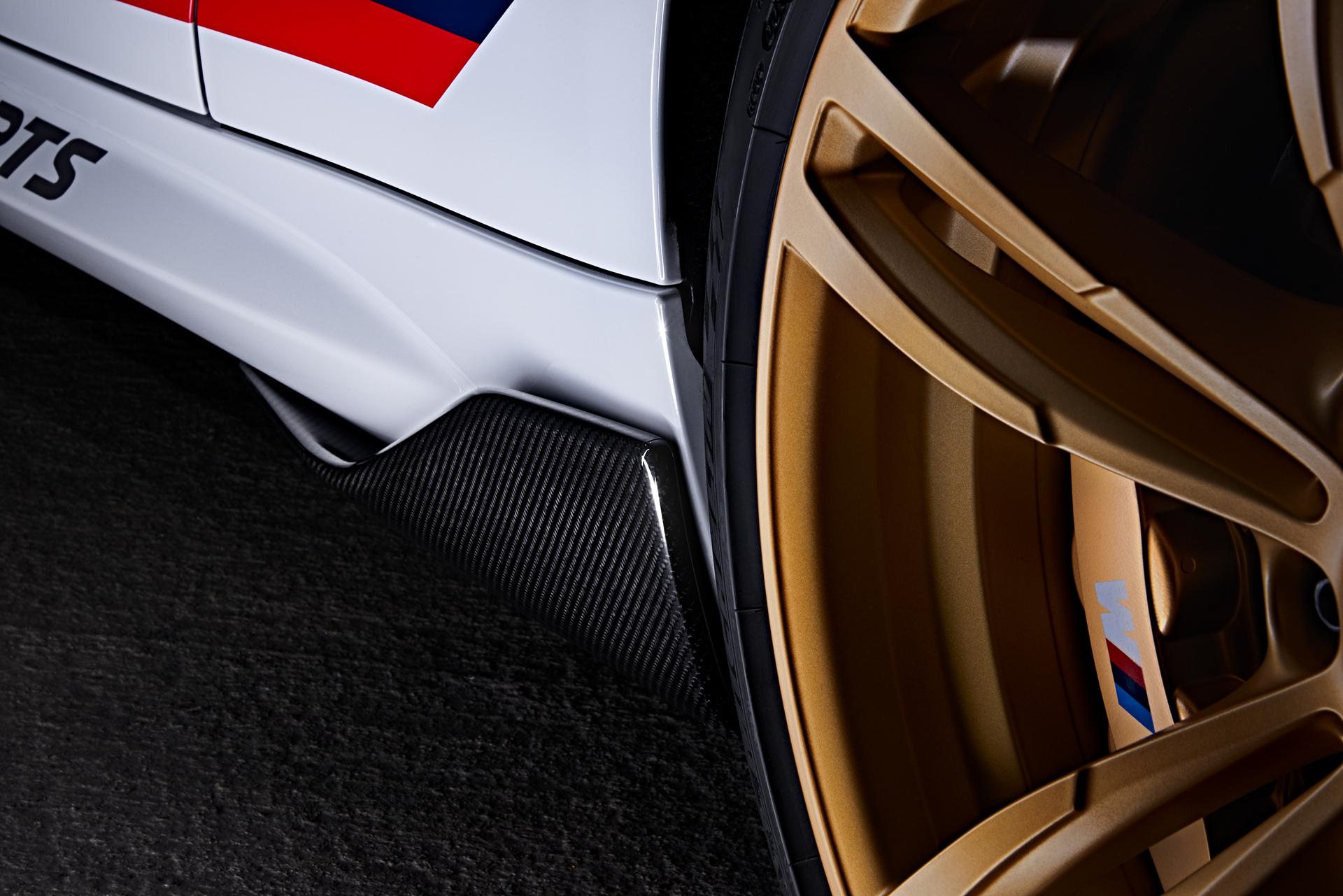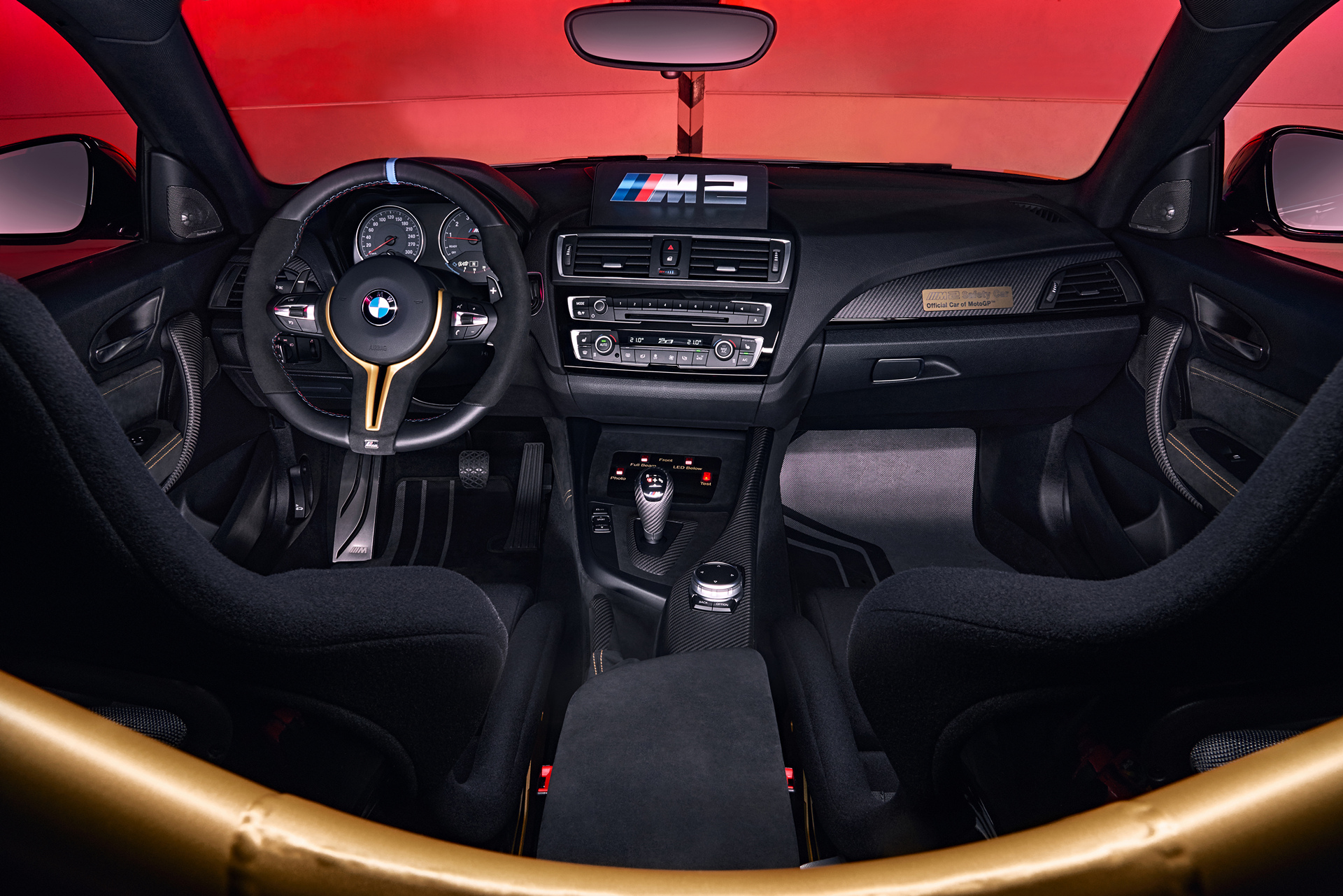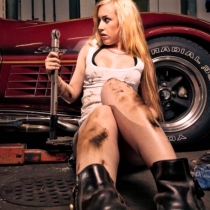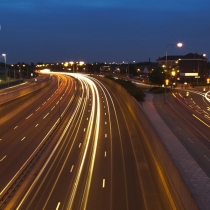BMW M IN MotoGP. High-performance for the pinnacle of motorcycle racing
MotoGP and BMW M Division: these two partners have formed an ideal combination for almost two decades. MotoGP is the pinnacle of motorcycle racing and features the best riders in the world on high-performance racing prototypes, in the development of which the manufacturers implement their latest technological ideas. High-performance and motorsport genes – attributes, with which BMW M Division is also synonymous. Since 1999, BMW M has been a permanent member of the international MotoGP family. The successful partnership with organiser Dorna Sports has grown consistently over the years, and is set to continue to run well into the future. In 2014, Dorna Sports and BMW M Division extended their cooperation up to and including 2020. Partnerships like this, which span decades, are extremely rare in top-class international sport.
At the heart of the commitment is the provision of the Safety Car fleet. BMW M implements the latest technology in order to guarantee the safety of the MotoGP riders, whatever the conditions. The Safety Cars are high-performance BMW M cars, whose outstanding driving properties make them the perfect foil to any challenges out on the racetrack. The latest example is the BMW M2 MotoGP Safety Car, which makes its debut this season. The Safety Cars are specially modified at the BMW M factory for their use as lead cars on the motorcycle racing scene. The same goes for all the other vehicles in the fleet.
BMW M Division’s commitment to MotoGP also includes numerous other activities. Since 2003, the BMW M Award has been presented at the end of the season to the best MotoGP qualifier. The BMW M MotoGP Experience allows visitors to experience the fascinating world of MotoGP up close and personal. BMW M MotoGP experts offer exclusive, first-hand insights. On selected Grand Prix weekends, BMW M Division presents its latest models and products with onsite campaigns.
BMW M OFFICIAL CARS. Outstanding in any role
The high-performance BMW M Safety Car fleet for MotoGP comprises other high-performance cars and BMW S 1000 RR Safety Bikes, as well as the actual BMW M Safety Cars themselves. Each has its own role, but all ensure that race events run safely and smoothly.
The Safety Cars and Safety Bikes are already in action while the racing bikes are still in the garage: On Thursday and the morning of each day of the event, they complete timing laps, which are used to check whether the timing and data systems are working correctly. This is followed by a slow lap by the Safety Cars, Medical Cars and the Safety Officer Car, during which the individual steward posts are checked.
During all the sessions and races, the Safety Car is ready to rapidly take the Medical Director to the scene of any crash. As well as the driver, the Medical Cars also carry an FIM Intervention Doctor and a nurse. The cars are equipped with all the necessary medical equipment to stabilise a patient in a critical condition: defibrillator, oxygen, ventilator, drugs, etc. One Medical Car is ready to go at the exit from the pit lane, the other is positioned on the other side of the circuit, about halfway round the lap. This guarantees that a crashed rider can be reached as quickly as possible, no matter where the crash took place.
In the case of a red flag, whether for a crash, oil leak or track conditions, the FIM Safety Officer and FIM Safety Advisor are taken to the relevant point on the track in the Safety Officer’s car, in order to check out the situation.
All the cars also have their own clearly-defined roles during the races themselves. This begins during preparations for the start of the individual races. About half an hour before the start, the BMW M2 MotoGP Safety Car, a Medical Car and the Safety Bikes take their place on the grid, in front of the motorcycles. Ten minutes before the start, the two Safety Bikes complete one lap before heading into the pit lane.
The Medical Car sets off nine minutes before the start. However, it initially remains trackside after the warm-up lap. A marshal uses a yellow flag to indicate the position of the car. The Safety Car does a lap five minutes before the start, during which it checks that the circuit is in perfect condition. Back on the start/finish straight, the Safety Car now takes its place at the back of the racing bikes.
During the warm-up lap, the Safety Car follows the field round the track, before pulling into the pit lane and taking up its position there, in order to be ready for action during the race. After the warm-up lap, the Medical Car also sets off again. It drives to the grid, where it stops behind the last bike. During the opening lap, the Medical Car follows the field round, in order to be on-site immediately should there be a serious crash. After the first lap, the Medical Car also takes up its position at the exit from the pit lane.
STRONG PARTNER SINCE 1999. Close relationship spanning the decades
Rarely do you come across such a long and successful partnership: the cooperation between BMW and MotoGP organiser Dorna Sports began back in 1999. For almost two decades, BMW M Safety Cars have always been on hand whenever points and titles have been up for grabs in the pinnacle of motorcycle racing. 2016 marks the 18th season of BMW M as the “Official Car of MotoGP”. Since the start of the partnership, BMW has consistently introduced innovative ideas to the commitment – and always ensures the highest possible degree of safety at the racetrack, courtesy of the very latest technology.
In 2001 the new BMW Z8 was launched within the MotoGP. The BMW Motorrad Boxer Cup, renamed the BMW Motorrad Power Cup in 2005, also made its debut on the same bill as the World Championship in the same year. At the end of the 2003 season, the best qualifier was presented for the first time with the BMW Award, which is now the BMW M Award and held in great acclaim among the MotoGP riders.
BMW M Division took on the role of “Official Car of MotoGP” in 2006. Since then, BMW M Division has repeatedly caught the eye with fascinating events and, with its fleet of vehicles, contributed significantly to the success of the first night race in Qatar in 2008. Since 2010, the BMW M Motorhome has been an important contact point in the paddock. In 2012, BMW M Division once again broadened its commitment. Since then, three-time World Champion and Dorna safety consultant Loris Capirossi has served as a BMW M MotoGP Expert. An exclusive incentive programme was also introduced, in the form of the BMW M MotoGP Experience.
BMW M Division creates new highlights every season with its Safety Cars. The latest models and impressive technical innovations – this is what makes the BMW M MotoGP Safety Cars of the past, present and future so special. The BMW M6 Gran Coupé made its debut as a Safety Car in 2013, while the BMW M4 Coupé was an eye-catching addition in 2014. In 2015, BMW M employed the newly-developed and innovative water injection for the first time in the BMW M4 MotoGP Safety Car. And the spectacular new BMW M2 Coupé will lead the Safety Car fleet in the 2016 season.
MotoGP – THE ELITE. Breathtaking action on two wheels
Maximum performance, the latest technologies and thrilling racing action: The MotoGP world championship is the premier league of international two-wheeled racing. Its history stretches back as far as 1949. Nowadays, the hugely popular series thrills millions of fans all over the world. World Championship titles are awarded in three categories: the elite MotoGP class, Moto2 and Moto3.
The MotoGP class has existed in its current form since 2002. The racing bikes are pedigree, powerful prototypes. The four-cylinder engines have a capacity of 1000 cubic centimetres and the bikes achieve an impressive top speed of over 340 kilometres per hour. Various different manufacturers’ prototype chassis are also used in Moto2. However, they are powered by standard Honda engines. The four-stroke powertrains have a capacity of 600 cc. The least powerful category is Moto3. Riders in this class do battle on pure prototypes with 250 cc engines, but strict regulations are in place to keep costs under control.
The riders stage thrilling races in all three classes. Usually, several riders battle for wins and podium positions at the front. Spectacular wheel-to-wheel battles with contact during high-speed duels are par for the course. This breathtaking action is what draws racing enthusiasts from around the world to MotoGP. Up to 200,000 spectators follow the races live from the stands; on top of this, there are many millions of TV viewers around the world.
The calendar for the 2016 MotoGP World Championship comprises 18 races on five continents. This season kicks off with the floodlit Grand Prix in Qatar (20th March). In keeping with tradition, Valencia (Spain) will host the season finale on 13th November. The race in Indianapolis will not be held this year, instead Spielberg in Austria (14th August) will be included in the race calendar for the first time.
BMW M2 MotoGP SAFETY CAR. The new highlight of the Safety Car fleet
BMW M goes into the 2016 MotoGP season with a Safety Car based on the new BMW M2 Coupé. The BMW M2 MotoGP Safety Car is the new highlight of the MotoGP fleet and immediately takes a leading role in the quest to get the field of top-class riders round the racetrack quickly and safely in the coming rounds of the World Championship.
The BMW M2 Coupé (combined fuel consumption with M DTC: 7.9 l/100 km; combined CO2 emissions: 185 g/km), which was unveiled in Detroit in January 2016, provided the ideal basis for a MotoGP Safety Car, particularly as its distinct racing genes are part of the product DNA. The new inline six-cylinder engine with innovative M TwinPower Turbo technology and three-litre capacity guarantees extremely sporty performance. With a maximum output of 272 kW/370 hp and a maximum torque of 7,000 min-1 , the extremely rev-happy power train really makes its mark out on the track. The intelligent, lightweight concept, low point of gravity and small, unsprung weight are further trump cards, which help ensure the maximum agility and dynamics of the high-performance coupé.
In the BMW M factory in Garching, the production car was modified, optimised and prepared by hand for its new role in MotoGP. As well as exclusive tailor-made solutions and mandatory safety features, the engineers at BMW M Division also equipped the Safety Car with extensive BMW M Performance Parts. This not only gives the car an eye-catching appearance, but also plays a practical role in the areas of aerodynamics, cooling and lightweight design. Many of the M Performance Parts, including the lowered thread chassis and exhaust with flap system, are also available as retrofit components for the BMW M2 Coupé.
FROM COUPÉ TO SAFETY CAR. Transformation in the BMW M factory
Back in early October 2015, a team of BMW M experts began preparing to assemble the BMW M2 MotoGP Safety Car. Two weeks later, a basic production model rolled into the halls of the M factory. That signalled the start of the task of manually converting the BMW M2 Coupé into an exclusive safety car. The modifications took a good ten weeks to complete.
The prototype workshop, which is responsible for innovative detailed solutions and perfect customisations within the BMW M factory, played a central role in the project. It is here that a team of highly-qualified specialists implemented the most demanding specifications by hand.
As well as the installation and addition of BMW M Performance Parts, the prototype workshop’s key roles included preparing tailor-made components, capable of coping 100 per cent with the high-performance demands faced on the racetrack. It is ultimately this combination of innovative technology and skilled manual perfection that make the BMW M2 MotoGP Safety Car truly one of a kind.
Step by Step to the Safety Car
One of the first tasks facing the technicians was to remove the rear sight on the basic model and free up the undercarriage. The supports for the roll cage, anchors for the six-point harness and bracket for the fire extinguisher were then welded into place. The cage itself was manufactured based on the BMW M4 GTS and adapted to the spatial requirements of the M2 Coupé.
The flat light bar on the roof features the very latest LED technology and control electronics. The prototype workshop manufactured a bracket accordingly, the design of which boasted both impressive aerodynamics and an athletic look. The lightweight, sandwich-style bracket consists of an under laminate, a perforated sheet in the centre and a carbon-fibre covering in the same colour as the car, which fits in superbly with the overall look. The internal metal panel not only absorbs tensile forces, but also helps secure the light bar, which can easily be removed for transport purposes.
The light bar is controlled via a specially developed control panel in the cockpit. Here, the crew can select from various lighting programmes and flash frequencies. The electrics experts have also installed additional flashing LED lgihts on the front and rear of the car. The respective control units stem from the SES specialists and were adapted for use in MotoGP. Blue LEDs are used on the front grille, while the Corona rings surrounding the headlights also flash. On the rear of the car, flashing red LEDs replace the reversing lights found on the production car. All signalling systems can be controlled separately and ensure maximum attention out on the racetrack.
Components Perfectly Attuned to One Another
As the project continued, it was the fluid dynamics experts who were put to the test. Although the light bar and roof brackets are designed to be very flat, they still affect the outstanding aerodynamics on the BMW M2 Coupé, particularly at racetrack speed.
For the technicians at the prototype workshop, this meant having to come up with suitable countermeasures to compensate for the distruption to the aerodynamics. Inspired by the BMW M4 GTS, they developed an easily adjustable rear wing made of carbon fibre reinforced plastic for the BMW M2 MotoGP Safety Car. This improved the airflow, which had been disrupted by the light bar on the roof, thus reducing the amount of lift on the rear axle.
As the entire chassis functions as one aerodynamic unit, the interaction with the front of the car also had to be optimised. The challenge here was to design a suitable front flap and to adapt it to the existing front skirt. The additions to the front of the car from the M Performance Parts range were to be retained.
However, the final version gives little indication of the effort that went into it, as the prototype, consisting of an adapter and splitter, was integrated perfectly in the front skirt. Here too, the BMW M specialists opted for a lightweight layer construction with glass fibre laminate and carbon fibre inlays. As a result, the front flap, rear wing and diffusor work perfectly together and guarantee the required amount of downforce and traction.
Designed For the Racetrack
Although the M Performance coilover suspension and Michelin Cup tyres are wonderfully in harmony with the standard M compound brakes on the BMW M2 Coupé, the management in the M factory opted for carbon-ceramic brakes derived from the BMW M3/M4.
The lightweight carbon-ceramic brakes are corrosion-free, extremely thermally stable, particularly hard-wearking and significantly reduce the unsprung weight. Despite the optmised performance, the Safety Car is actually easier to maintain – another advantage, given the packed MotoGP calendar.
When it comes to the exhaust, the engineers have put their faith in tried-andtested M Performance material. However, the system was stripped down completely for its outings in the motorcycle world championship. The reason: without silencer, catalytic converter and flap system, the BMW M2 MotoGP Safety Car can still be heard over the roar of the prototype motorcycles on their installation lap.
Finally, a racing hood latch was fitted in Garching. And because the BMW M2 MotoGP Safety Car will also be used in overseas races, a battery master switch and fuel pumping device help to guarantee safety when being transported by air.
The Final Touch
Shortly before the end of the project, the attention switched back to the upholsterers. Many trim parts in the interior were re-upholstered – a task that required considerable effort. Again, it is hard to imagine the amount of work involved, as new unfinished parts were required for all the trims. These then had to be covered with leather or Alcantara, before being welded using ultrasound.
To cut a long story short: the interior and exterior of the new BMW M2 MotoGP Safety Car represent the racing know-how of BMW M Division in its purest form. Many of the prototype parts on the new highlight of the Safety Car fleet feature the colour gold. As well as the basic paintwork in Alpine White and the typical BMW M livery, the car also features striking gold components, such as the roll cage, wheels, brake calipers, rear wing mounts, seat brackets, steering wheel spokes and contrast stitching.
The golden badge in the decorative trim is proof that the staff in the M factory give their full attention to even the smallest of details. It features a special engraving, underscoring the fat that the new BMW M2 MotoGP Safety Car is one of a kind.




































